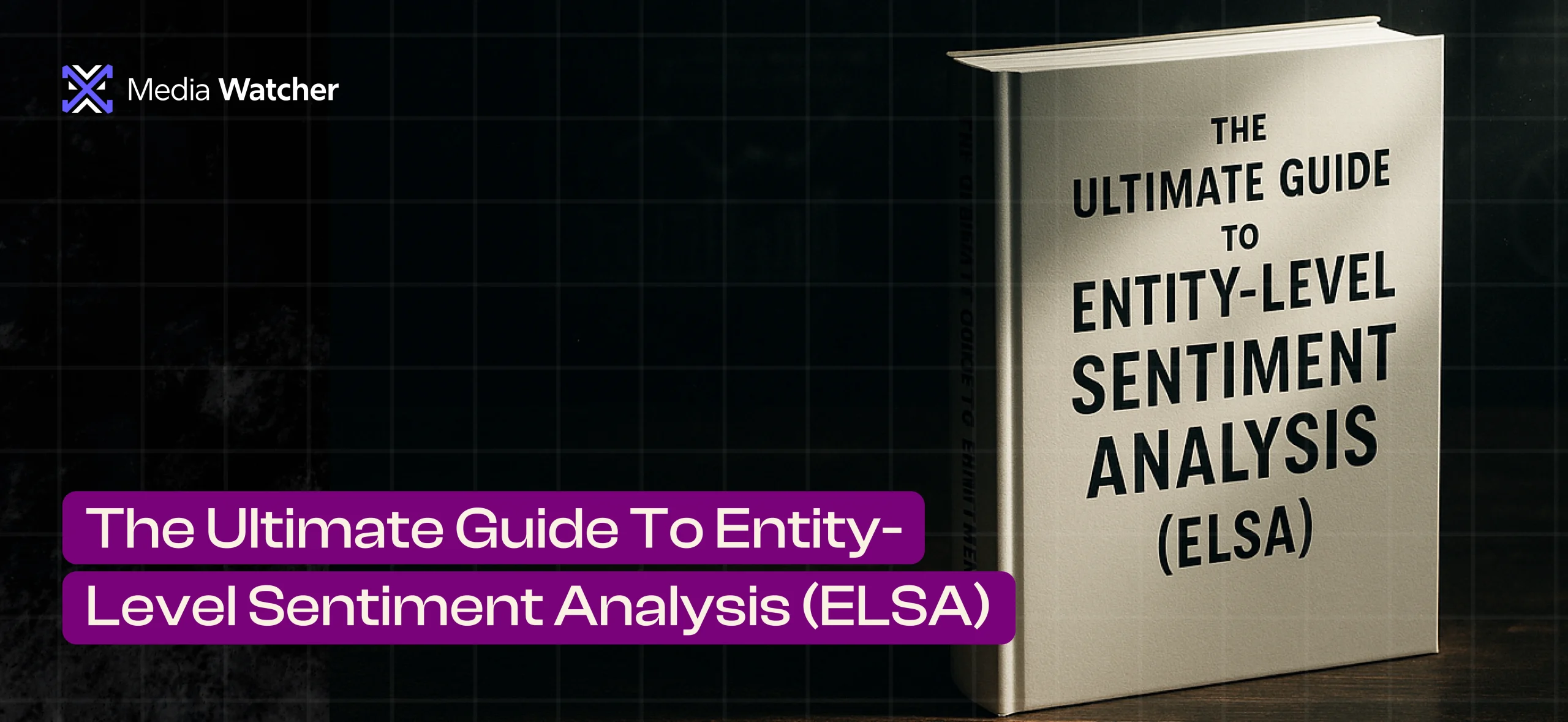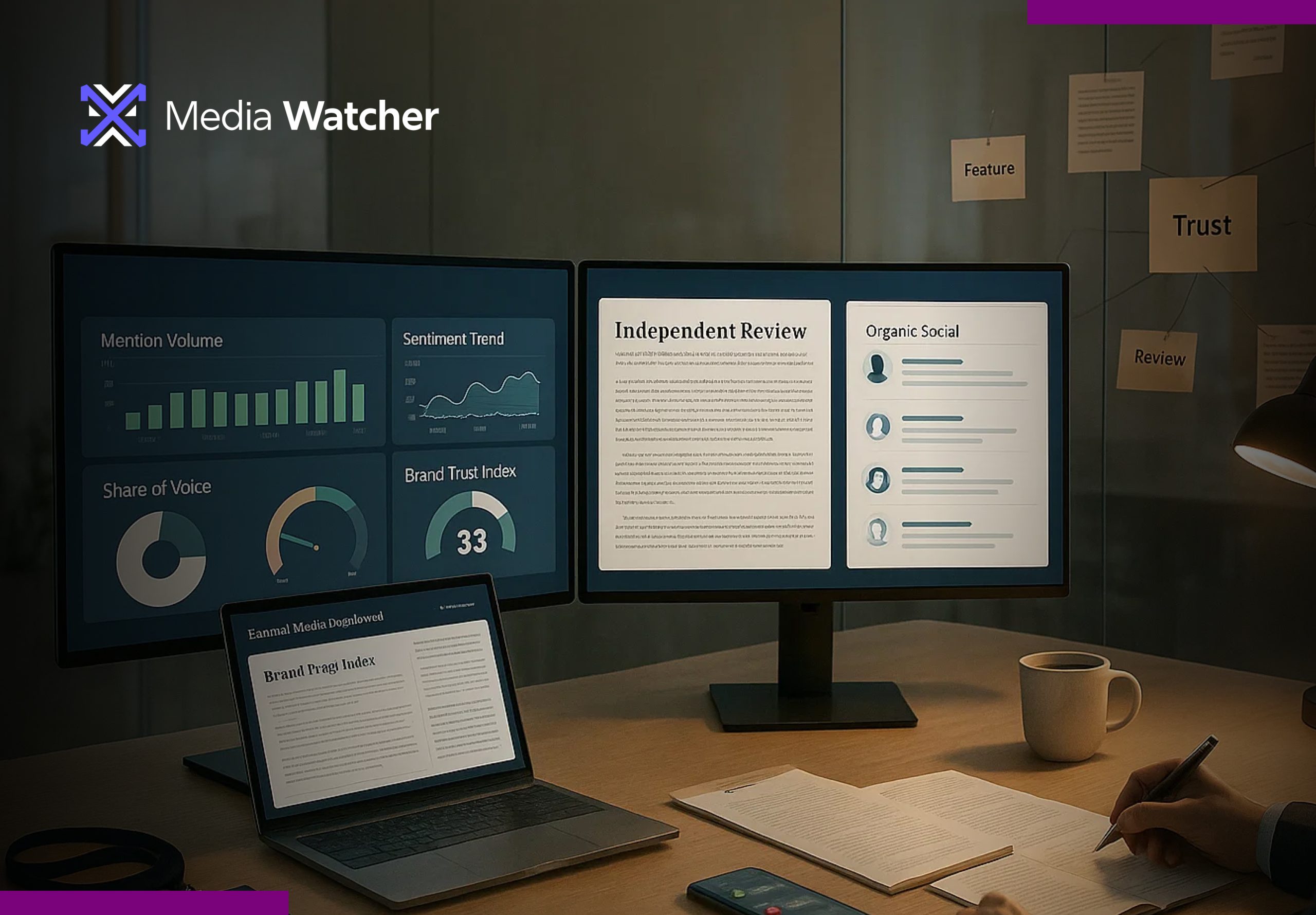Consider a news article that covers a financial downturn, but appreciate how several banks responded proactively during the crisis. During events, be it a financial scandal, geopolitical tension, or a policy decision, media reactions are layered and swift.
Yet most legacy sentiment analysis tools flatten this complexity into a single label, such as “negative,” but the result may be misleading or lack complete context. The main complexity of such a general sentiment analysis solution is that it often applies hidden judgments.
Instead of isolating how different entities are portrayed, it assigns a sweeping sentiment to the entire article, making it nearly impossible to distinguish praise from blame in the presence of emotionally charged narratives.
Until sentiment is identified per entity, major business risk remains hidden in plain sight, even within positive media coverage.
|
That’s exactly where Entity-Level Sentiment Analysis (ELSA) comes into play. Instead of just generalizing the overall perspective, it provides a holistic view of how each entity involved in the event is projected in the media and how the audience perceives it.
What Is Entity-Level Sentiment Analysis (ELSA)?
Entity-level sentiment analysis is the practice of dissecting the sentiments at individual entity levels. It helps analysts in examining the specific sentiment linked to each entity within a piece of online media content.
ELSA helps decision makers to see past the generic sentiment and ensure that all the mentioned entities, including a country, product, or person, are evaluated at an individual level.
A holistic analysis of different entities mentioned in the media captures the targeted perceptions about someone or something. It is important because:
- The sectoral concerns, product perceptions, and management reputation are all entity-level risk measures.
- Brand crisis develops across interconnected actors and narratives.
- Online media outlets and news channels explore several different narrative aspects and characters in a single document.
Below is a detailed analysis of media coverage surrounding the recent FIFA Club World Cup controversy. Rather than simply summarizing the event itself, this breakdown highlights how different entities were portrayed in an article.
FIFA, Ronaldo, and Online Media Signals – A Case Study
The promotion for the 2025 FIFA Club World Cup was accompanied by a spike in criticism, centered on the global football sensation, Cristiano Ronaldo. Various articles reportedly discussed the player’s short-term move to Saudi Arabian club Al-Hilal, despite his existing contract with rival club Al-Nassr.
These rumors triggered widespread public reactions and varying media portrayals. For instance, take the case of a news article, posted by Danville Register & Bee, that explores the controversy in detail. While the overall sentiment of this media article is slightly positive, the entity-level analysis reveals the underlying sentiment attached to each key figure, which is elaborated below:
- Cristiano Ronaldo (Neutral): An analysis of sentiment associated with Ronaldo revealed that the player was perceived as professionally disciplined. His decision not to pursue this short-term move earned him considerable respect, as it was seen as a demonstration of clear priorities.
- Esteve Calzada (Neutral): Al-Hilal Club’s CEO, Calzada, publicly dismissed the shifting rumor, which was a masterclass step in controlling the overall event narrative. His statement showed the club’s executive clarity, independence, and long-run financial foresight. With the help of entity-level sentiment synopsis, the journalists were able to isolate the sentiment of this entity from that of the club.
- Al-Hilal (Slightly Positive): Central to the speculation, the Al-Hilal Club was identified as strategically grounded, gaining reputational power due to its resistance to headline-chasing deals.
- Al-Nassr (Neutral): The player’s current club remained largely passive in this whole narrative. The club was portrayed as an entity with an indirect impact on the case.
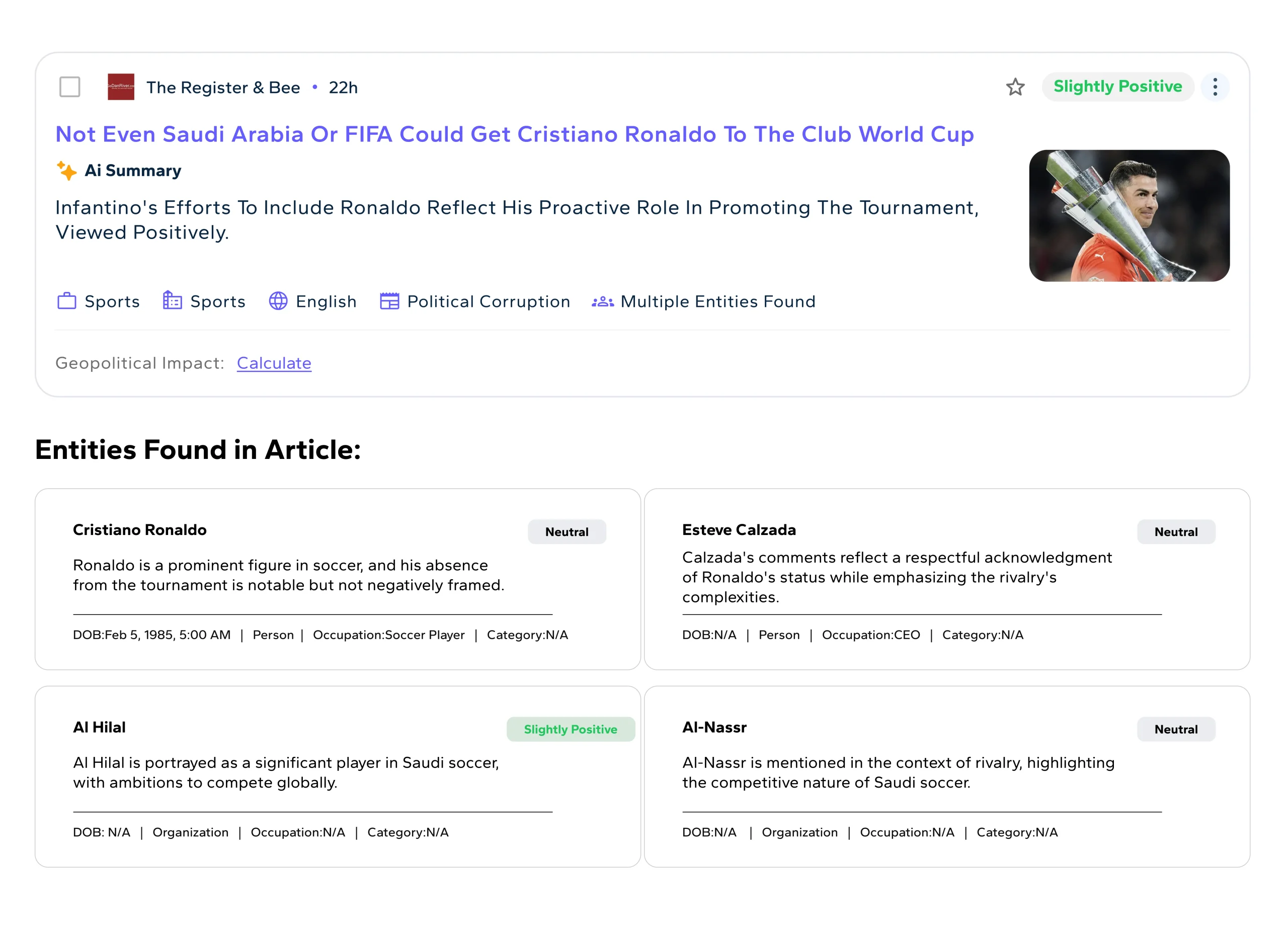
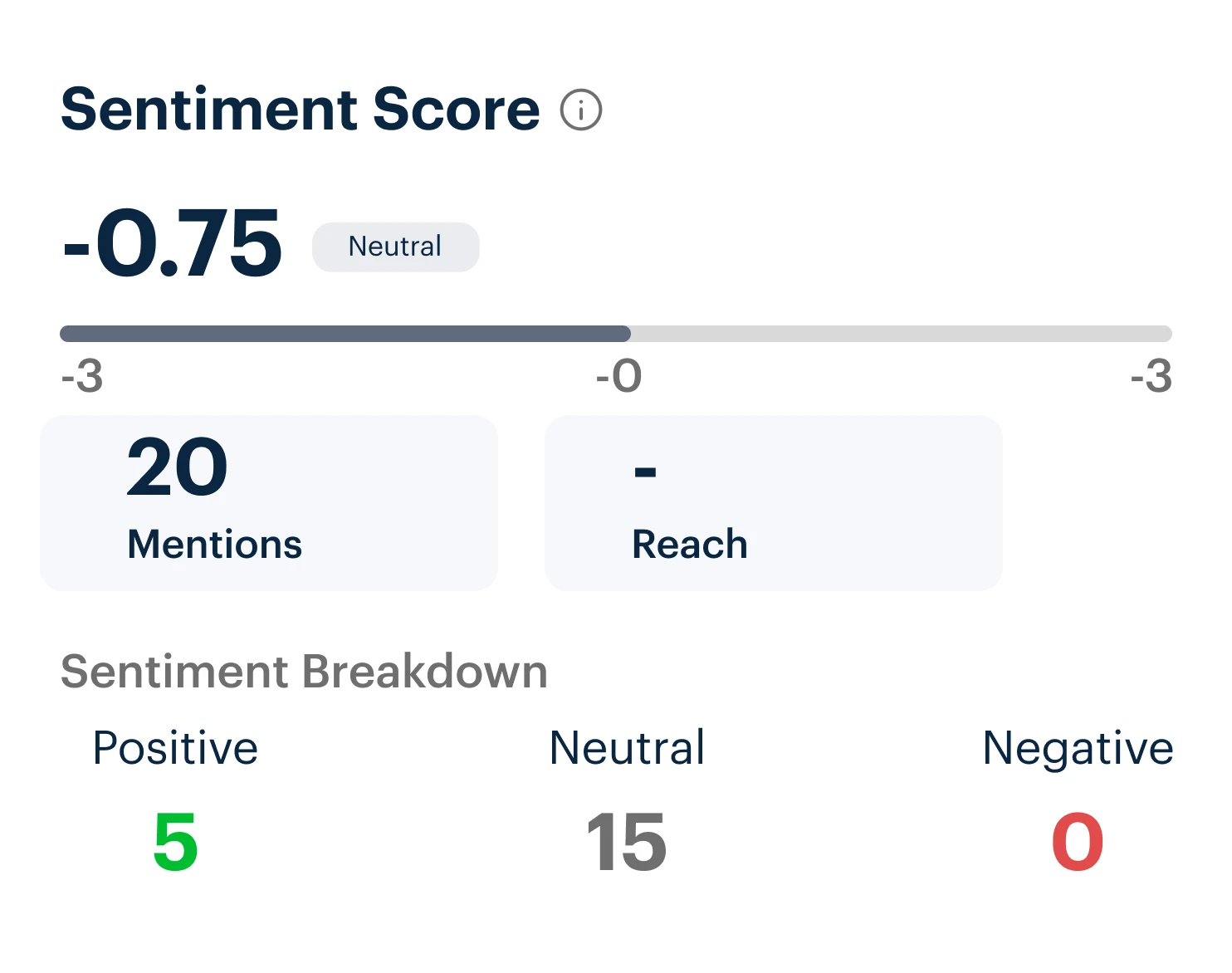
Entity-Centric Depiction of the Event
For communication teams and decision-makers, ELSA depicts which entities benefit or bear the cost of media coverage around a topic across news and social media platforms, including Reddit, TikTok, Facebook, and YouTube, in real-time. This allows businesses to shape up their campaign management strategies accordingly.
Take the launch of a high-tech smartphone. The general public sentiment might overall be positive. However, while users praise the design and display, they might criticize battery life or privacy settings. By mapping sentiments at each level and filtering the right sentiment with the right entity, stakeholders can:
- Timely act on signals that affect their particular sector
- Prioritize the management of issues by relevance and audience sentiments
- Avoid being deceived by mere surface-level virality
|
Suggested Read: Decode the Crowd’s Voice with Social Media Sentiment Analysis
Who Can Benefit From Entity-Level Sentiment Analysis Services
The entity-level sentiment analysis serves a crucial role as it reveals which entity is recovering, who remains under fire, and how stakeholders’ reputation is evolving to accurately forecast post-crisis events. Apart from this, sentiment analysis at entity level plays a significant role for several groups, the breakdown of which is given below:
Brands Launching New Products
When launching a new product, many brands fail to differentiate between the sentiment aimed at the product itself and the broader sentiment toward the brand. Sentiment assessment at the entity level enables teams to separate these layers by highlighting whether criticism stemmed from product features, external association, or brand history.
Hate Speech and Misinformation Analysts
During a heated election cycle, a campaign falsely accused the Electoral Commission of manipulating voter data. Misinformation severely targets communities, people, and organizations. While most tools flagged the content as controversial, they failed to isolate who was being discredited in this scenario. Layered sentiment assessment maps those targets and identifies the entities with which the negative sentiment is attached.
The entity-level assessment of sentiments identifies the affected group by names, instead of generally categorizing the whole scenario. Moreover, it triggers alerts based on negative sentiment tied to entities, making it important to combat hate speech and misinformation during politically-sensitive moments.
Journalists and Publishers
Entity-centric assessment of sentiments dives deeper into understanding the reader’s perspectives more efficiently. By mapping sentiments towards each entity individually, it offers journalists a clear and unbiased read on how different subjects are portrayed, ensuring a more balanced and credible reporting.
Not only that, it ensures that the publishers evaluate the specific outlets and subjects that their readers cheer for or are against, allowing them to tap into their audience requirements in real-time.
Risk and Compliance Managers
Most brands struggle to capture the root cause of a crisis when a sudden scandal leads to loss of profitable returns. ELSA ensures that the risk and compliance teams detect the sentiment trends linked to legal issues and preempt backlash by examining the negative tones towards subsidiaries.
Furthermore, such actions assist the brands in forecasting the risk and trends related to key players and subjects. In this way, brands can prepare for regulatory evolutions by examining the audience sentiment shift to proposed policies and developments.
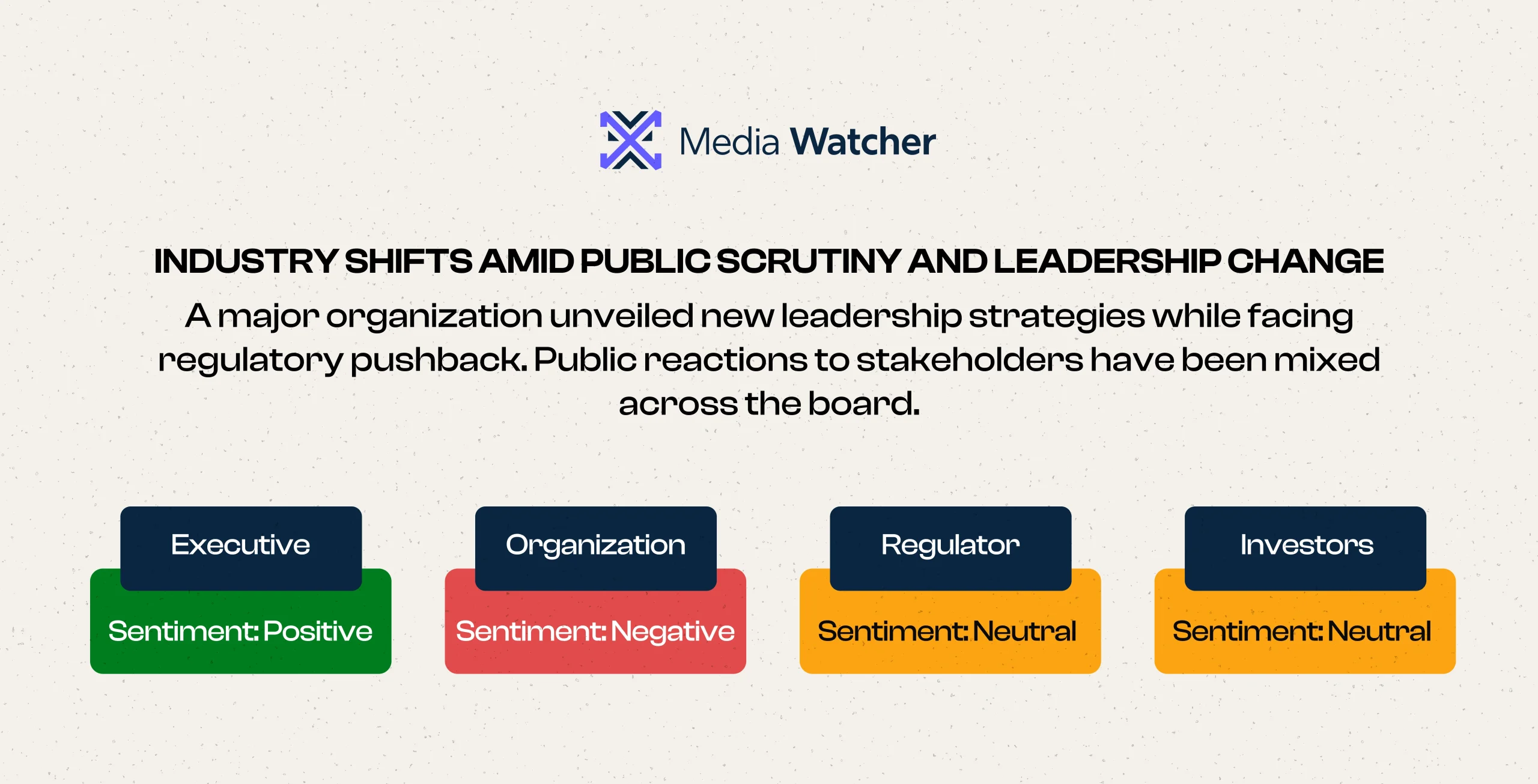
Looking For Entity-Level Clarity? Media Watcher Has Got You Covered
For organizations focusing on enhancing their decision-making procedures, entity-level assessment of online sentiments is critical. With Media Watcher’s entity-level sentiment analysis, brands and decision-makers can get clarity about the subjects that could either benefit or harm the company’s overall reputation.
Media Watcher decodes sentiment at the subject level, providing reputational managers an instant map of reputational opportunities and risks.
- Media Watcher’s sentiment filtering extracts and tracks more than 50 million entity mentions with critical tones across the global social media and news platforms.
- With a 200 millisecond alert time, it enables organizations to make informed campaign decisions in real-time.
- The solution also offers historical data extraction and assessment modules, allowing brands to track decades-old discussions and sentiment trends around various entities.

